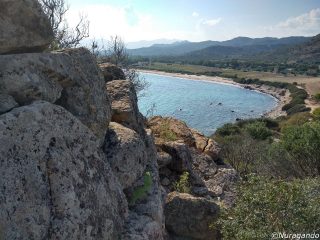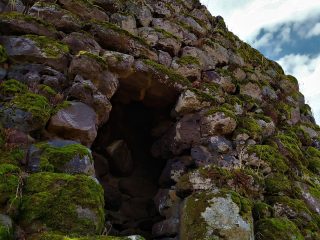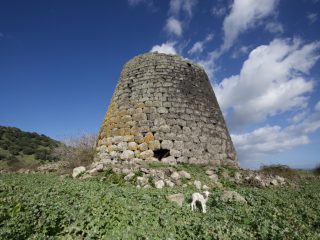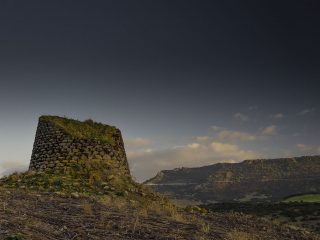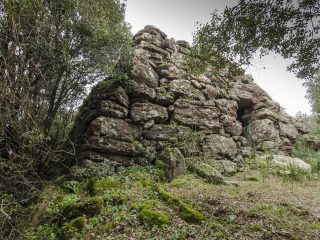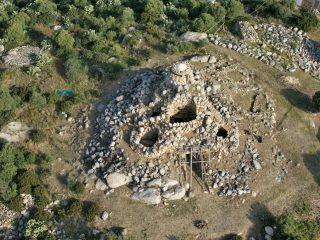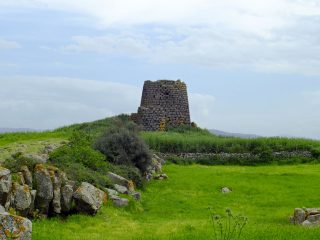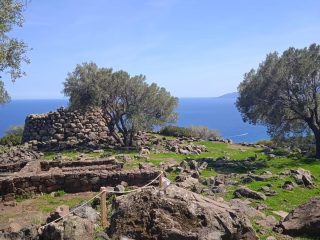On the edge of Ogliastra stands the extensive S’Arcu ‘e is Forros sanctuary village from Nuragic times.
The Nuragic people built two large rectangular megaron temples, unusual for Nuragic architecture, on a pre-existing settlement, from around 3,000 years ago. The first one to be uncovered was temple A, one of the most monumental on the island. Its purpose was probably for worship and its main ritual element was water. What identified the sacred nature of the building was the discovery of numerous stone votive vases and bronze items, offered to the god and deposed in the temple’s chapel.
Temple B has a stone altar with basalt and red sandstone ashlars, which give them a sophisticated two-tone. Even more incredible is the presence of two faces (or protomes) carved in bas relief, just like the fireplace above the altar with a frieze which reproduces the bastions of a Nuragic tower.
The two temples are part of the fabric of a large and partially uncovered village. The numerous buildings explained the purpose of the site. Crucial to this is the presence of a structure found nowhere else in Sardinia or elsewhere and understood to be a furnace for metal smelting. The rooms which can be traced back to the processing of metals (genuine workshops), arranged close to the temples, are proof of just how much metallurgy and the sacred sphere were closely interconnected.
The numerous objects uncovered are evidence of a thriving, dynamic trade between Sardinia, the east and the peninsula. They can contribute to shining a new light on Nuragic civilisation, offering a more complex and articulated vision of society, its economy and religious ideology during the Bronze and Iron ages.
The S’Arcu ‘e is Forros site is, to date, the most important metallurgic centre in Nuragic Sardinia.







